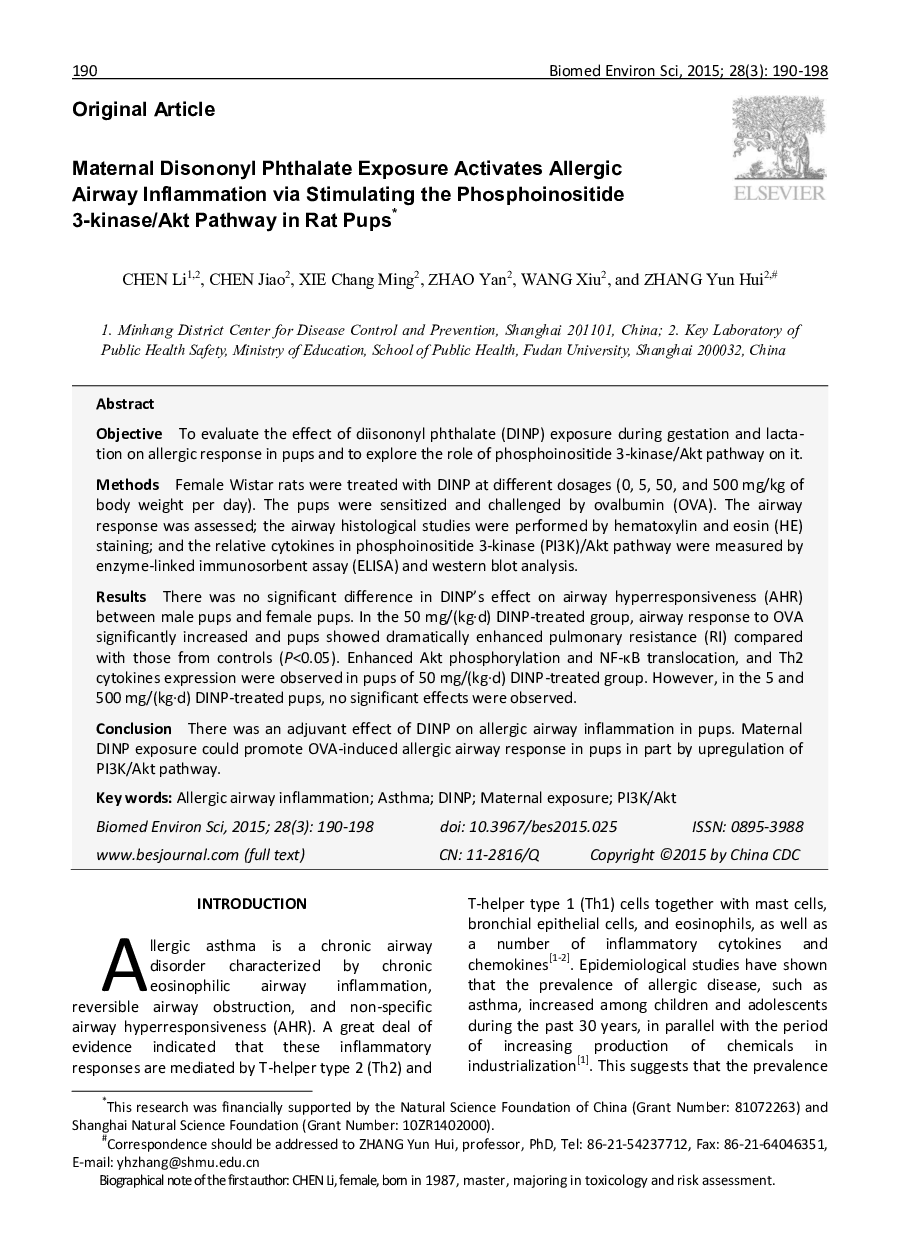| کد مقاله | کد نشریه | سال انتشار | مقاله انگلیسی | نسخه تمام متن |
|---|---|---|---|---|
| 4195877 | 1278644 | 2015 | 9 صفحه PDF | دانلود رایگان |
ObjectiveTo evaluate the effect of diisononyl phthalate (DINP) exposure during gestation and lactation on allergic response in pups and to explore the role of phosphoinositide 3-kinase/Akt pathway on it.MethodsFemale Wistar rats were treated with DINP at different dosages (0, 5, 50, and 500 mg/kg of body weight per day). The pups were sensitized and challenged by ovalbumin (OVA). The airway response was assessed; the airway histological studies were performed by hematoxylin and eosin (HE) staining; and the relative cytokines in phosphoinositide 3-kinase (PI3K)/Akt pathway were measured by enzyme-linked immunosorbent assay (ELISA) and western blot analysis.ResultsThere was no significant difference in DINP's effect on airway hyperresponsiveness (AHR) between male pups and female pups. In the 50 mg/(kg·d) DINP-treated group, airway response to OVA significantly increased and pups showed dramatically enhanced pulmonary resistance (RI) compared with those from controls (P<0.05). Enhanced Akt phosphorylation and NF-κB translocation, and Th2 cytokines expression were observed in pups of 50 mg/(kg·d) DINP-treated group. However, in the 5 and 500 mg/(kg·d) DINP-treated pups, no significant effects were observed.ConclusionThere was an adjuvant effect of DINP on allergic airway inflammation in pups. Maternal DINP exposure could promote OVA-induced allergic airway response in pups in part by upregulation of PI3K/Akt pathway.
Journal: Biomedical and Environmental Sciences - Volume 28, Issue 3, March 2015, Pages 190-198
